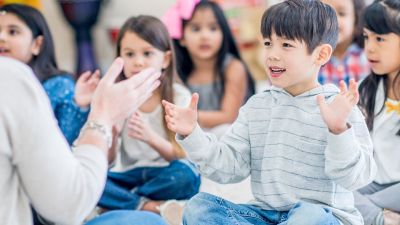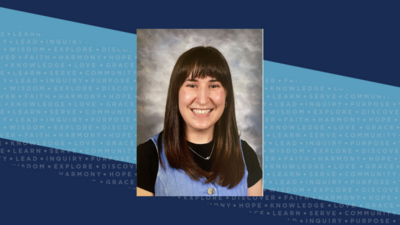Early Childhood Developmental Milestones Checklist

Parents and educators track developmental milestones to determine how closely a child’s skills mature compared with the same child’s growth and physical development. While children develop at slightly different paces, milestones reveal important clues to caregivers. Of course, as the saying goes, children don’t come with manuals. But an attentive parent, relative or daycare provider who keeps abreast of an infant’s progress can note variations in development and raise their concerns with a pediatrician or other professional.
The U.S. Centers for Disease Control (CDC) and the American Academy of Pediatrics (AAP) each maintain a list of developmental milestones that adults can use as a metric to determine their child’s developmental pace. By using the following developmental milestones checklist, based on work done by the CDC and the AAP, early childhood educators can quickly and easily assess the developmental rate of children in their care.
Childhood Development Milestones – The First Year
Five Minutes
Early childhood development scoring actually begins moments after birth with the APGAR test.
APGAR Score
Developed in 1952 by Virginia Apgar, an anesthesiologist at New York–Presbyterian Hospital, the APGAR score is the first metric used to determine an infant’s health. Dr. Apgar created a mnemonic using her own name for five categories: Activity/muscle tone, Pulse/heart rate, Grimace, Appearance, and Respiration/breathing. Infants score a zero, one, or two for each category. The best possible score, therefore, is a ten. Few infants reach a ten, however, since nearly all of them have blue hands or feet at birth, reducing their appearance score by at least one point.
Delivery room personnel determine the APGAR score 1-5 minutes after birth, and a low score at one minute may have risen by the fifth minute. The APGAR score’s record does not usually follow a child into the daycare center, preschool, or classroom since low scores tend to indicate reversible medical concerns not long-term developmental delays. Nevertheless, early childhood educators should be aware of these scores if parents have them. The reason? Research published in the academic journal Obstetrics & Gynecology showed a possible causal link between an APGAR score lower than a seven and lower cognitive abilities later in life.
While most babies with low scores do well in later life, educators with concerns about an infant should suggest to parents that they mention a low APGAR scores when talking with their pediatrician.
2 Months
Caregivers can check infant developmental milestones starting when children reach two months old. At this point, children should be able to do the following:
Emotional and Social Skills
- Start to smile at others
- Try to look at caregivers
- Enjoy playing with other people
- Imitate some expressions the people around them use
- Can briefly self-soothe by bringing hands to mouth and even sucking on hands
- Show expression with face and body
Physical Skills
- Hold up their head
- Begin to lift head and chest when lying on belly
- Kick and stretch when placed face up
- Can open and shut their hands
- Grasp toys and shake them
- Movement with arms and legs become smoother and more controlled
Communication Skills
- Turn head toward sounds they hear
- Coo and gurgle
Cognitive Skills
- Focus on faces around them
- Start to recognize people and objects even from a distance
- Follow people and objects with eyes
- May cry or fuss, acting bored when activities do not alter
Sensory Skills
- Seem to prefer the smell of something sweet
- Choose soft materials over coarse ones
According to the CDC, caregivers should talk with a pediatrician if their two-month old child shows signs of the following:
- No response to loud sounds
- Does not track moving objects with eyes
- Fails to smile at the people nearby
- Never or rarely brings hands to mouth
- Cannot hold up the head when lying on his or her stomach
4 Months
Babies should have reached these early childhood development milestones within 120 days of birth:
Emotional and Social Skills
- Reflect others’ emotional expressions such frowning or smiling
- Like interacting with people
- May cry when someone stops playing with them
Physical Skills
- Push down on a hard surface using legs
- Push up on elbows while lying on stomach
- Shake and swing toys
- May roll from tummy to back
Communication Skills
- Laugh, gurgle, and coo
- Notice that crying or other behaviors get attention
Cognitive Skills
- Watch faces closely
- Recognize familiar people and objects from a distance
- Respond to affectionate words and gestures
- Express emotions
Sensory Skills
- Senses are now working together
- Vision sharpens to about 20/40 and the ability to distinguish colors comes into focus
According to the CDC, caregivers should talk with a pediatrician if their four-month old child shows signs of the following:
- Fails to watch moving objects or smile at people
- Makes no sounds and doesn’t smile
- Has trouble controlling eye movements or holding head steady
6 Months
Babies should show the following characteristics at six months of age:
Emotional and Social Skills
- Can distinguish between familiar faces and strangers
- Look at themselves in the mirror
- Do not find everyday sounds upsetting
- Calm down with rocking, gentle touches and soothing sounds
- Seem happy
Physical Skills
- Hold up their head
- Reach for objects while lying on belly
- Can transfer toys from hand to hand and play with feet while lying on their back
- Roll in both directions and can rock back and forth
- When supported in a standing position, they allow the legs to take bodyweight
- Could begin to bounce
Communication Skills
- Begin to babble and may use babbling to express emotions
- Notice and react to noises
- May recognize own name
Cognitive Skills
- Explore toys with both hands and mouth
- Show curiosity
- Can find a partially concealed toy
- Reach for objects far away
Sensory Skills
- Enjoy many different movements
According to the CDC, caregivers should talk with a pediatrician if their six-month old child shows signs of the following:
- Does not show affection or respond to sounds
- Does not laugh, squeal or make sounds such as “ah” or “oh”
- Has difficulty getting things to mouth
- Does not roll over
- Seems either overly stiff or uncontrolled and floppy
9 Months
Babies are much more alert and active at nine months, moving around the house and discovering new things at lightning speed. By this age, infants should show the following characteristics:
Emotional and Social Skills
- Show anxiety with strangers
- Demonstrate preference for certain adults and objects
Physical Skills
- Sit with support
- Pull themselves up
- Stand with support
- Crawl, and may even crawl up and down stairs or over gates (Keep an eye out!)
- Use a pincer grasp to pick up toys
Communication Skills
- Make noises that sound like words
- Understand “no”
- May copy the gestures or sounds they observes from others
Cognitive Skills
- Put objects in mouth
- Play peekaboo
Sensory Skills
- Turn the pages of a board book
- Investigate toys of different sizes, shapes and textures
According to the CDC, caregivers should talk with a pediatrician if their nine-month old child shows signs of the following:
- Can’t sit up with help
- Doesn’t say babble words like “mama” and “dada”
- Fails to respond to his or her own name, recognize people or look where a parent points
- Doesn’t switch toys between hands
12 Months
When it’s time to cut baby’s first birthday cake, children should be able to do the following:
Emotional and Social Skills
- May show fear or cry when dad or mom leaves the room
- Can hand a book to caregivers in order to ask for a story
- Thrust out legs and arms to assist caregivers when dressing
- Imitate other people in play
- Show preference for certain objects or people
Physical Skills
- Finger feed himself
- Cruise by holding on to furniture while walking
- Work into a sitting position without help
- Transfer from a sitting to a standing position without help
- Crawl away from or toward objects at a distance
Communication Skills
- Make exclamations like “uh-oh!”
- May attempt to imitate a caregiver’s words
- Shake head “yes” or “no” and may wave “bye-bye”
Cognitive Skills
- Can spot the correct picture when hears the image named
- Find hidden objects with ease
- Bang two items together
- Follow simple directions
Sensory Skills
- Enjoy music
- Let items go without help
According to the CDC, caregivers should talk with a pediatrician if their one-year old child shows signs of the following:
- Is not crawling
- Doesn’t pull up self
- Fails to say single words such as “mama”
- Doesn’t point or gesture
- Shows signs of regression
While parents should not be overly concerned if a child fails to meet each developmental milestone right on target, it’s important to remember that achievement timelines can vary. Know what facts to share with the pediatrician or other developmental professional to ensure the healthy and productive development of children.
Early childhood educators who want to advance their careers and become accomplished teachers of infants and young children can study the latest research and concepts in development and education through with an online master’s in education degree from Concordia University, Nebraska. We offer 11 unique programs, including those in curriculum and early childhood instruction.
Our online Master of Education in Curriculum and Instruction degree program is an innovative, inquiry-based program with a focus on professional development and the InTASC Model Core Teaching Standards. The online Master of Education in Early Childhood Education courses are founded on established age-appropriate approaches (birth through age 8), while also examining current research and emerging issues in this field.
All our programs feature hands-on instruction immediately applicable to your job, and our convenient online format means you can earn your degree on a schedule that’s right for you.


